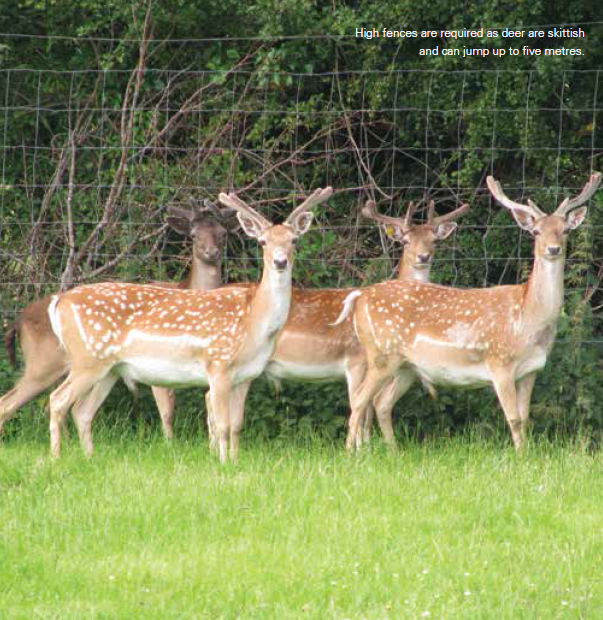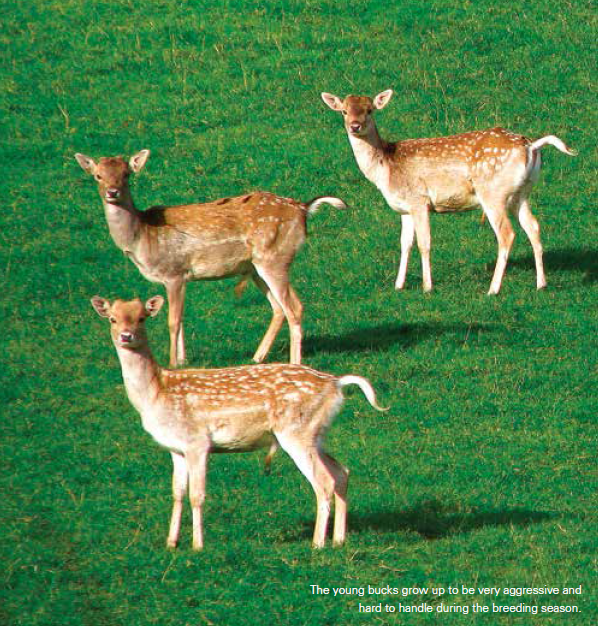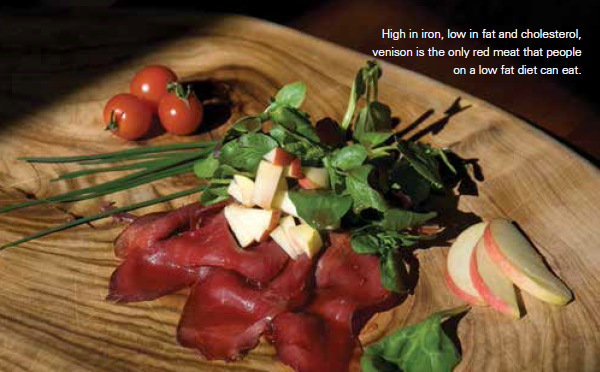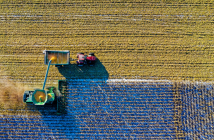Farming Deer in Ireland: Fallow


So how did they get to Ireland? Not by Ryan Air. It seems that the Fallow Deer were spread by the Romans, who brought them to Great Britain and Ireland to roam through royal forests, and some escaped to form a feral colony. In Phoenix Park in Dublin, a herd of 400-450 fallow deer descend from an original herd introduced in the 1660s.
The Rut
The rut is in October. This is a time where the bucks go completely insane and breeders need to keep their heads down. Antlers are broad and shovel-shaped. And the bucks aren’t afraid to wield them. The timing of the rut is controlled by the length of the day, and competition for females can be intense.
When the bucks fight it out, they lock antlers and push or wrestle, and emit sounds (groans) which are rhythmic and cough-like. Scraps and markings can be found in rutting areas which are scented by glands on the bucks face. Even so, the thought of handling a raging buck is not enough to deter some people from ‘farming’ the Fallow Deer.


The O’Hara family of the small luxury hotel Coopershill in Sligo have a small deer “farm.” They sell their prized venison to the local community, plus use it for their own recipes in their restaurant. Simon O’Hara and his family have been breeding Fallow Deer for 16 years, after buying a herd from a German farmer in County Westmeath who was getting out of the business. With a will of steel, they ploughed forth, having never kept any other animals.
Fences
So what is it like farming deer? Says O’Hara, “Eight foot high fencing is expensive! The deer are wild animals so you can’t be in the same shed with them at the same time. We have to have slides and shutters so they can’t see you when you are feeding them. There is only one offspring per doe each year. The upside is that there is unassisted birthing, and they are low maintenance. All fields have to be connected to each other and with the handling sheds. We have to have high fences because you can’t herd them down the road.
“They would just run off! Our deer are grass-fed. At the end of December, they are brought into sheds and kept till the grass starts to grow. Then they are fed silage (which we have contractors bale on our own land). In the winter we supplement the fawns’ feed with meal. We sell the meat direct off our own website, in Sligo farmers’ markets and to local restaurants. This year we are starting to sell our smoked haunch of venison with Odaios Foods who will supply it into nationwide delicatessens and restaurants.”


Deer Farming: Hobby Farms
So why Fallow Deer? Says O’Hara, “We started with Fallow Deer as a kind of a hobby and these are the prettiest and tastiest deer in Ireland! They meet a plate between 18 months and 2 years. We kill on average five animals a week between October and April. They are taken to a small abattoir in north Sligo. There, Gerry Byrne has a cervine license, our deer skip the queue and are killed immediately on arrival in a specially set-up line to handle them. Gerry then hangs them for a week, butchers them and vacuum-packs the meat.
“He also makes sausages for us using the ingredients we supply. I think the difference between wild and farmed venison is important. Wild deer eat plenty of branches and bark which makes the meat a lot stronger. Our farmed deer with their grass diet have a much more subtle flavour. Also the age of wild deer is difficult to gauge and so it is hard to get consistently tender meat. Often wild venison has to be marinated. Our farmed animals are guaranteed under two years and guaranteed tender.”
Deer Farming: Deli
So if you fancy yourself a bit of venison maybe you will find yourself heading to your local deli. And you can spoil yourself, because the health properties of venison are incredible. High in iron, low in fat and cholesterol, it is the only red meat that people on a low fat diet can eat. So tuck in!






